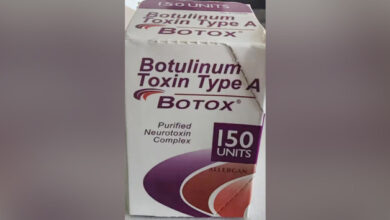EPA announces first national standard limiting 'forever chemicals' in drinking water

(NEW YORK) — The Environmental Protection Agency on Wednesday announced a new rule mandating the first-ever national standard for the presence of so-called “forever chemicals” in drinking water.
The new standard limits six types of per- and polyfluoroalkyl substances, or PFAS, found in drinking water — a move the EPA says will protect around 100 million people from exposure.
“Today, I’m extremely excited to announce that we are finalizing the first ever nationwide, legally enforceable drinking water standard for PFAS — the most significant action on PFAS the EPA has ever taken,” EPA Administrator Michael Regan said during a call with reporters. “This standard will reduce PFAS exposure to approximately 100 million people.”
PFAS are a ubiquitous group of chemicals found in a host of industrial and personal products, including fire extinguishing foam, food packaging, dental floss and others, according to the EPA.
The chemicals break down very slowly, allowing them to build up in people, animals and the environment over time — hence the nickname, “forever chemicals.”
“This rule really is a breakout from where we’ve been for decades,” Erik Olson, senior strategic director for health at the Natural Resources Defense Council, told ABC News. “Finally, we’re seeing government start to take the PFAS crisis seriously.”
The EPA says it expects 6% to 10% of the 66,000 public drinking water systems in the U.S. may have to reduce PFAS from their water systems to meet the new standard.
Under this rule, water systems across the country will have three years to monitor for these chemicals and an additional two years to implement new technology to reduce their PFAS levels.
One billion in funding from the Bipartisan Infrastructure Law will be available to help states and territories with testing and treatment for PFAS as they work to come into compliance over the next few years.
By reducing PFAS exposure for millions of Americans, the Biden administration says this new standard will also prevent severe illness and death for many Americans.
“One hundred million people will be healthier and safer because of this action,” Regan said. “This action will prevent thousands of deaths and tens of thousands of serious illnesses.”
PFAS exposure has been linked to increases in cholesterol, changes in liver enzymes and pregnancy complications like preeclampsia, among other issues, according to the Centers for Disease Control and Prevention.
“Every single person in the United States is walking around with PFAS in their bodies,” Olson said. “The risks are very real. These EPA rules will start the process of controlling the risks from tap water.”
The chemicals targeted by the EPA in this rule include five individual PFAS: PFOA, PFOS, PFNA, PFHxS, and HFPO-DA. These five are also known as “GenX Chemicals.” The rule also targets mixtures of two or more of four PFAS: PFNA, PFHxS, PFBS, and “GenX chemicals.”
Olson noted that a large area in North Carolina famously became polluted with GenX Chemicals after a chemical plant spent decades dumping PFAS into the Cape Fear River.
“There’s still only six that EPA is regulating, which is a good step, but they are 14,000 of these PFAS,” Olson said. “So, we’re taking a bite out of the problem, but we really need to regulate this whole class of toxic chemicals together because if we keep regulating them a few at a time, we’re just never going to get off the toxic treadmill and never going to catch up with all the new chemicals the industry keeps producing and exposing us to.”
Some industry groups opposed the rule during its public comment period.
The American Chemistry Council released a statement last summer criticizing the EPA’s plan, saying the assessment of health impacts the agency relied on for its analysis was flawed and that it underestimated the cost of compliance for water systems.
Biden administration officials say they expect continued opposition under the finalized standards, but that they designed the rule to withstand potential challenges.
“We feel very confident that we have designed a very durable rule, well within our statutory authority, that begins to protect people from harmful pollutants that are showing up in their drinking water,” a senior administration official said. “This is something that we’ve done in concert with our sister agencies. It’s a government wide effort, and we’re very proud of the product that we are releasing today.”
Copyright © 2024, ABC Audio. All rights reserved.






